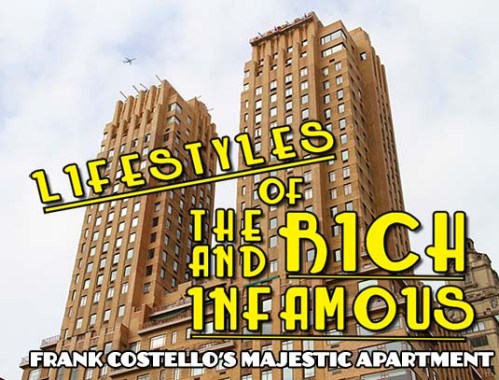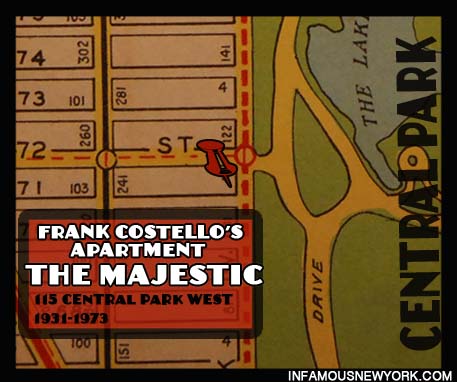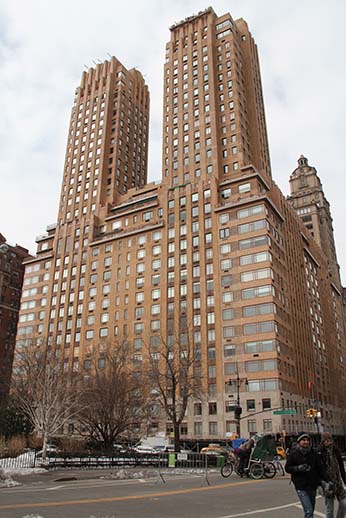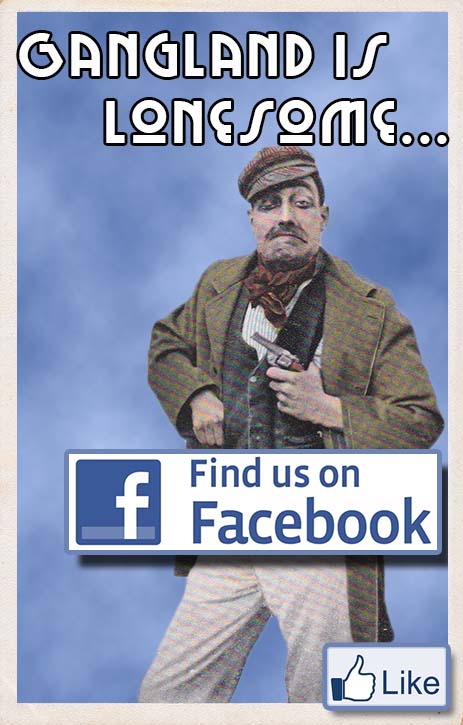Addresses:
225 Sullivan Street- Mother’s apartment
208 Sullivan Street-Triangle Civic Improvement Association
67 East 77th Street Just off Park Avenue- Townhouse
Status: All Standing
Was he mentally ill or a criminal mastermind? A brain damaged ex-pug, or the leader of the Genovese Crime Family? These questions dominated New York’s tabloids for much of 1990s. Despite the notoriety, for much of his life of crime Vincent “the Chin” Gigante lived with his dear old ma, Yolanda, at 225 Sullivan Street in the heart of Greenwich Village, a place the FBI once called:
“One of the most impregnable mob strongholds in the country” The New York Times, 1988
Born in 1928 in the slums of Greenwich Village to a watchmaker and a seamstress, Gigante came up from the streets swinging. He Graduated from P.S. 3 elementary school, but dropped out of Textile High in 9th grade to make his way in the world as a boxer.
Vito Genovese and his Greenwich Village henchmen: Tony Bender Strollo and Tommy Eboli ruled Chin’s universe. Genovese’s bodyguard and top hitman, Eboli loved boxing in big way, and he brought the talented Gigante under his wing, managing both his fight career and his crime career.

The Gigante family tenement. FBI agents once found Vincent here standing in the shower under an open umbrella.
Becoming Vinny the Chin
Gigante boxed all over New York, in club fights and in the backs of bars. Like an actor waiting tables at night, Gigante moonlighted as mafia enforcer of Beat Generation Greenwich Village, amassing arrests for illegal guns, theft, arson and more.
From there, Vincent, whose mother called him Vincenzo, fought bouts in St. Nick’s Arena and Madison Square Garden transforming his ma’s nickname into a gangland moniker, The Chin. Veteran boxing manager, Lou Duva would reminisce in Jacobs Beach, The Mob, The Garden & The Golden Age of Boxing:
“When you boxed in the Garden, you got the recognition. You’d arrived as a fighter.”– Lou Duva
With a record of 20 wins and 4 losses, what caused the Chin to quit the fights and become a full time mobster? (Click to see Gigante’s Boxing Record) Perhaps Gigante got sick of getting his brains knocked in for peanuts, or was there something else?
The Return of Vito Genovese
Genovese, returned from his self-imposed exile in fascist Italy during WWII, had plans for the young boxer who would become a mafia superstar serving as Genovese’s chauffeur, bodyguard and top triggerman.

For most of his life, Vincent Gigante lived at 225 Sullivan Street with his Ma, Yolanda. His headquarters, the Triangle Civic Association was across the street at 208 Sullivan Street.
Vito Genovese vs. Frank Costello
With Genovese’s return, a confrontation loomed with Frank Costello, the reigning boss of the Luciano Crime Family. Gigante was tasked with rubbing out the boss to make way for Genovese. The ex-boxer took to an underworld shooting range beneath the streets of Greenwich Village to ready his trigger finger.
On May 2nd, 1957 the Chin struck, but the botched the job, grazing Costello. However, the flesh wound paid off and Costello retired from the rackets (Click to read the full story).
1957, A Bad Year for the Mob, Apalachin and More
Despite the successful takeover of the Luciano Family, it would be a bad year Gigante. The Federal Bureau of Narcotics(FBN) had The Chin and Genovese’s global narcotics operation in their sites. On November 11, 1957, Apalachin put the mob on prime-time television and in 1958 the FBN convicted Genovese and Gigante for narcotics trafficking. Genovese would never walk the streets again.
The Odd Father
Gigante clearly did not enjoy prison. After his release he became increasingly paranoid, secretive and reclusive. By the late 1970s, he regularly checked into mental institutions and wandered the streets of the Village in slippers and a bathrobe. According to Selwyn Raab, author of the Five Families,
“Gigante’s bizarre behavior was also exhibited in his mother’s fourth-floor apartment. One day, agent Pat Marshall and Pat Collins knocked on Yolanda Gigante’s apartment with a subpoena for her son. Chin was standing in the bathtub, under a closed shower head, wearing a bathrobe. He had an open umbrella over his head…”—Selwyn Raab, The Five Families
The Triangle Civic Association
Despite the crazy act, Gigante ruled over the crime family, positioning East Harlem Mafia kingpin, Fat Tony Salerno, as a front boss and buffer. Chin held court across the street from his mother’s apartment at The Triangle Civic Association, 208 Sullivan Street. The nondescript club had little more than a bar and an espresso machine but it served as a low profile command center, which he had swept for bugs regularly.

Once a hub of gangland intrigue, Vincent Gigante’s Triangle Civic Association is now a tea shop.
The FBI bought the crazy act but most mobsters knew better. Sammy the Bull Gravano later reminisced to Peter Maas,
“But it was clear as a bell that he was the boss. So why was he doing his nut act? Sometimes I would think that he really was crazy and took medication when he had to be sane.” Sammy the Bull Gravano, Underboss.

Vincent the Chin Gigante’s posh townhouse just off of Park Avenue.
Chin’s Townhouse
By the 1980s, Chin grew even more eccentric. He had two separate families, and a wife and a mistress both named Olympia. One family lived in Old Tappan New Jersey and the other in a posh Upper East Side townhouse, just off Park Avenue, located at 67 East 77th Street. The luxurious white bricked home was purchased by record executive Morris Levy in 1983 for $490,000 and gifted to Gigante’s mistress for a mere $16,000.
Despite the 20 year crazy act, the FBI eventually caught up with the Chin, convicting him of racketeering in 1997. He would die in the same penitentiary as his mentor Genovese.

Gigante’s townhouse was located at 67 East 77th Street.






